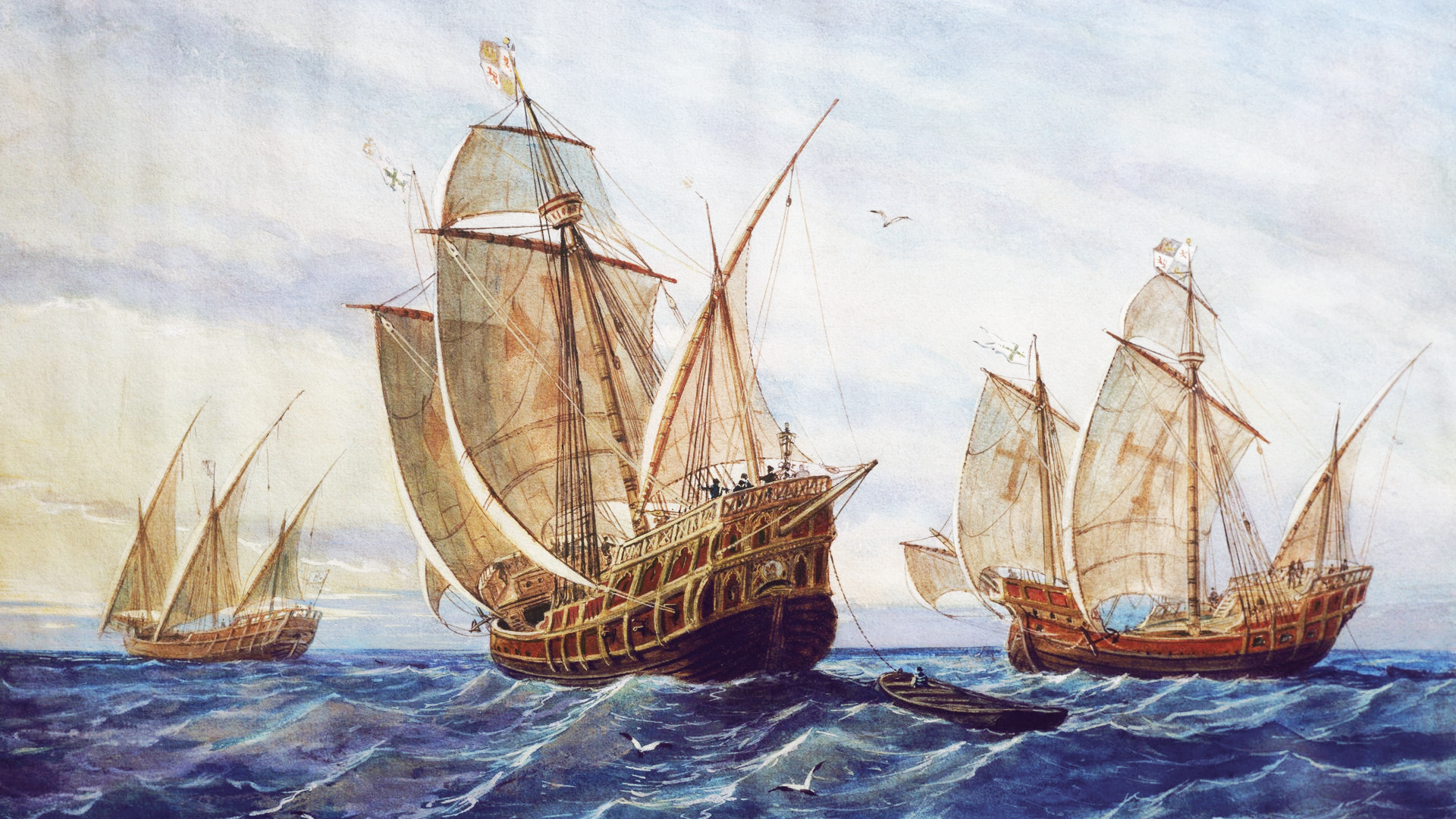Columbus Sets Sail for the 'Indies'

Christopher Columbus’s ships—the Niña, the Pinta, and the Santa María—sailing across the Atlantic.
What Happened?
From the Spanish port of Palos, Christopher Columbus—an ambitious navigator from Genoa, Italy—launched his first transatlantic voyage with three ships: the Niña, the Pinta, and the Santa María. His goal? To find a western sea route to Asia and its fabled riches. What he found instead was a continent he didn’t even know existed.
On October 12, 1492, after weeks at sea, land was spotted—likely present-day Watling Island in the Bahamas. Believing he had reached the East Indies, Columbus claimed the land for Spain and began a months-long island-hopping voyage through the Caribbean, mistakenly identifying Cuba as China and Hispaniola as Japan.
Columbus’s journey is often framed as courageous exploration, but the reality is more complicated. Though he brought tales of new lands, spices, and even captives back to Spain, his arrival also marked the beginning of brutal conquest, forced labor, and the transatlantic slave trade. He left 39 men on Hispaniola in a settlement called La Navidad, all of whom were dead by his return in 1493.
Columbus would return three more times. Over the course of his voyages, he enslaved Indigenous people, imposed violent rule, and failed to find the riches he promised. His governorship on Hispaniola was marked by tyranny so severe that he was eventually arrested and returned to Spain in chains.
Despite never setting foot on the North American mainland, Columbus’s legacy endures—both as a symbol of European exploration and a reminder of its devastating costs. His journeys kicked off the Columbian Exchange, forever changing the global balance of power, ecology, and demographics. And while parades still bear his name, many now push to replace them with Indigenous Peoples’ Day—to honor the cultures and communities his voyages helped erase.
Why It Matters
Columbus’s 1492 voyage ushered in an age of empire, exploitation, and global transformation. It connected distant continents, but at a steep cost to Indigenous lives, lands, and legacies. Understanding what really happened—beyond the myths—is essential for reckoning with the long shadow of colonialism. To study Columbus is not just to study where he went, but what followed—and who paid the price.
?
What was Columbus actually looking for when he left Spain in 1492?
Why did Columbus believe he had reached Asia, and how did that shape his actions?
How did Columbus’s voyages impact the Indigenous peoples of the Caribbean?
What is the Columbian Exchange—and how did it reshape the world?
Why do some people celebrate Columbus Day while others advocate for Indigenous Peoples’ Day?
Dig Deeper
Though he didn't produce much profit for the monarchs of Spain, Columbus opened a path to the new world for all of Europe.
Was Columbus a visionary explorer or a ruthless colonizer? This TED-Ed video puts Columbus on trial, examining the facts behind the legacy.
Related

The Market Revolution: How Innovation Transformed America
In the early 1800s, America changed from a land of small farms to a booming nation of factories, railroads, and markets. The Market Revolution connected people, goods, and ideas—while also revealing deep inequalities in who benefited from progress.

Reconstruction: Rebuilding a Nation and Redefining Freedom
After the Civil War, the United States faced the enormous task of reintegrating the South, securing rights for freedpeople, and redefining citizenship and equality. Reconstruction (1865–1877) was a bold experiment in democracy—filled with groundbreaking laws, historic firsts, and fierce backlash.

The Bill of Rights: What Is It—and What Does It Actually Do?
The Bill of Rights wasn’t added to the Constitution because everything was going great, it was added because the people didn’t trust the government. And they had every reason not to.
Further Reading
Stay curious!
